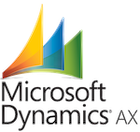Bridging ERP and IoT: Why Integration is the Future of Smart Manufacturing
Connect machines, operators, and ERP systems to turn fragmented signals into real-time, actionable insights.
Manufacturing is entering a precision era. Output and unit cost still matter, but the new competitive edge is how fast you can sense, decide, and act. GlobalReader links the shopfloor to your ERP backbone so that machine signals, operator actions, and order progress flow automatically — without manual retyping or lag. The result is a single operational truth for planning, costing, and continuous improvement.
Below, we outline the building blocks of a connected factory — and how GlobalReader’s integrations make them practical to deploy, scale, and govern.
What Is ERP Integration and Why It Matters for Manufacturers
ERP integration means connecting your enterprise resource planning software to shopfloor IoT systems so production orders, materials, and feedback move automatically in both directions. With ERP integration, planners see live progress, operators get the right instructions, and finance trusts the data.
From Data Islands to a Connected Factory
Most factories still run on a patchwork of paper travelers, Excel files, and isolated systems. These data islands create latency and blind spots: orders start without the latest routing, small stoppages are invisible, and costing relies on estimates.
By streaming IoT data and operator inputs straight into ERP, GlobalReader replaces assumptions with verifiable telemetry: actual run hours, real good/output quantities, scrap reasons, changeover time, and downtime classification — all tied to the correct work order.
Our core ERP integrations sync orders, products, and materials into GlobalReader and return shopfloor feedback to the source system. This keeps planning and execution aligned minute‑by‑minute and prevents master data drift.
ERP Integration Examples: How Manufacturers Connect Systems in Practice
Below are real examples of ERP integrations supported by GlobalReader. Each example shows how production orders flow from ERP to the shopfloor and how real-time feedback flows back to ERP.

Microsoft Dynamics 365 Business Central (BC)
Imports production orders and products, and returns real-time shopfloor feedback.

Microsoft Dynamics 365 Finance & Operations (FO)
Integrates production and material data for seamless visibility between factory and finance.

Microsoft Dynamics NAV
Imports production orders and materials, and sends live feedback back to NAV.

Microsoft Dynamics AX
Supports real-time feedback from production and order synchronization.

MRPEasy
Imports production orders and sends shopfloor feedback back to MRPEasy.

Monitor G5
Exchanges production orders and material data in real time with shopfloor feedback.

Eziil
Sends production information to GlobalReader for improved analytics and performance tracking.
Noom
Imports production orders into GlobalReader and returns shopfloor feedback back to Noom.

Directo
Imports production orders and materials; sends shopfloor feedback back to Directo.

